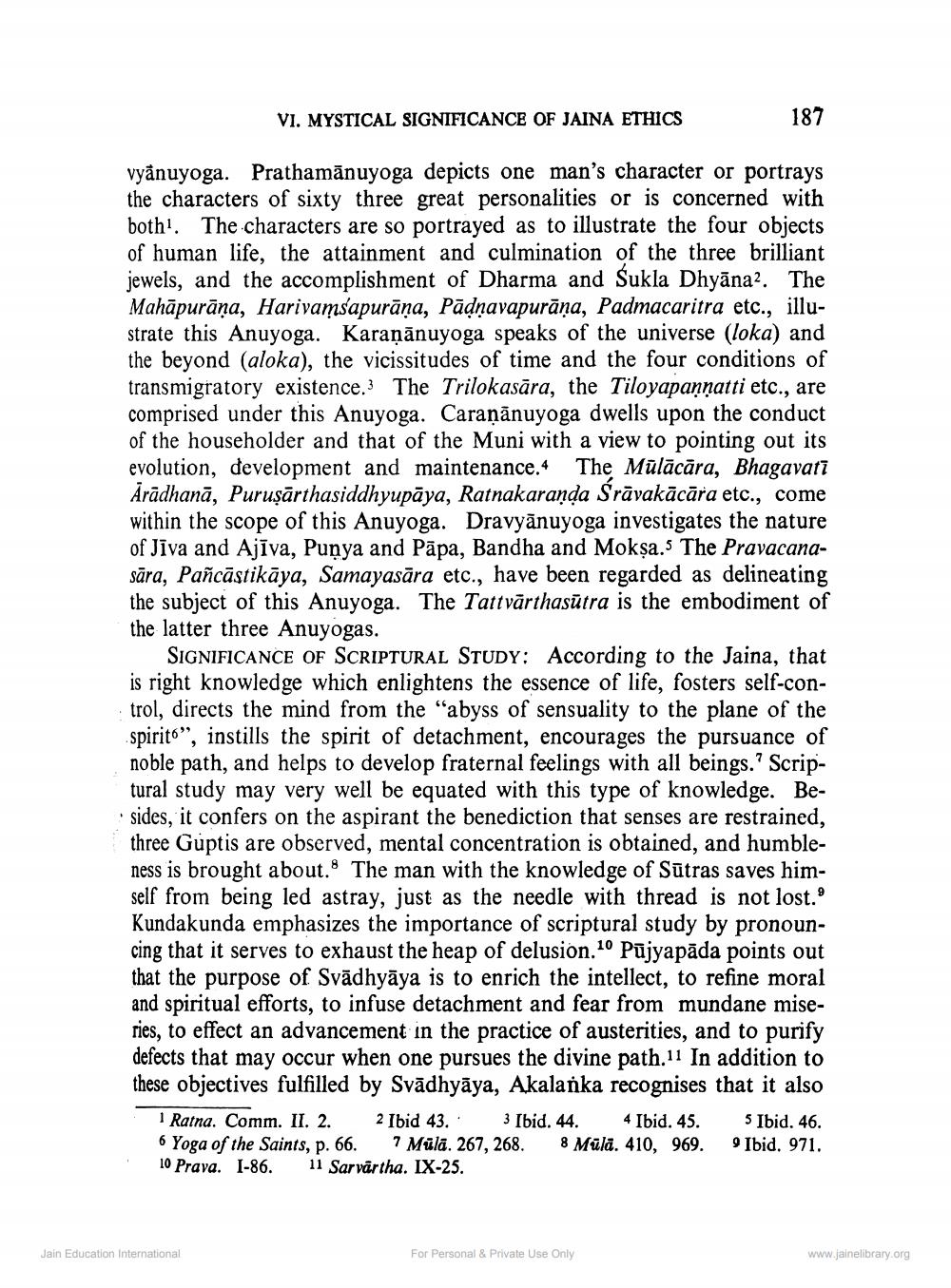________________
VI. MYSTICAL SIGNIFICANCE OF JAINA ETHICS
187
vyānuyoga. Prathamānuyoga depicts one man's character or portrays the characters of sixty three great personalities or is concerned with both. The characters are so portrayed as to illustrate the four objects of human life, the attainment and culmination of the three brilliant jewels, and the accomplishment of Dharma and Sukla Dhyāna2. The Mahāpurāņa, Harivamsapurāņa, Pāđịavapurāņa, Padmacaritra etc., illustrate this Anuyoga. Karaņānuyoga speaks of the universe (loka) and the beyond (aloka), the vicissitudes of time and the four conditions of transmigratory existence. The Trilokasāra, the Tiloyapanņatti etc., are comprised under this Anuyoga. Caraṇānuyoga dwells upon the conduct of the householder and that of the Muni with a view to pointing out its evolution, development and maintenance. The Mülācāra, Bhagavati Arādhanā, Puruşārthasiddhyupāya, Ratnakaranda Srāvakācāra etc., come within the scope of this Anuyoga. Dravyānuyoga investigates the nature of Jīva and Ajīva, Punya and Pāpa, Bandha and Mokşa.The Pravacanasāra, Pañcāstikāya, Samayasāra etc., have been regarded as delineating the subject of this Anuyoga. The Tattvārthasūtra is the embodiment of the latter three Anuyogas.
SIGNIFICANCE OF SCRIPTURAL STUDY: According to the Jaina, that is right knowledge which enlightens the essence of life, fosters self-control, directs the mind from the "abyss of sensuality to the plane of the spirito”, instills the spirit of detachment, encourages the pursuance of noble path, and helps to develop fraternal feelings with all beings.' Scriptural study may very well be equated with this type of knowledge. Besides, it confers on the aspirant the benediction that senses are restrained, three Guptis are observed, mental concentration is obtained, and humbleness is brought about. The man with the knowledge of Sūtras saves himself from being led astray, just as the needle with thread is not lost. Kundakunda emphasizes the importance of scriptural study by pronouncing that it serves to exhaust the heap of delusion. 10 Pūjyapāda points out that the purpose of Svādhyāya is to enrich the intellect, to refine moral and spiritual efforts, to infuse detachment and fear from mundane miseries, to effect an advancement in the practice of austerities, and to purify defects that may occur when one pursues the divine path.11 In addition to these objectives fulfilled by Svādhyāya, Akalanka recognises that it also
1 Ratna. Comm. II. 2. 2 Ibid 43. 3 Ibid. 44. 4 Ibid. 45. 5 Ibid. 46. 6 Yoga of the Saints, p. 66. 7 Müla. 267, 268. 8 Müla. 410, 969. Ibid. 971. 10 Prava. 1-86. 11 Sarvartha. IX-25.
Jain Education International
For Personal & Private Use Only
www.jainelibrary.org




